Editor’s note: This article was originally published in the December 2012 edition of the Aussie Finch Forum newsletter. Sadly, David Holmes passed away earlier this year. This article has been reproduced here as part of our efforts to immortalise David’s enormous contribution to Australian aviculture.
Over the years I have experimented and at times struggled to breed the Weavers and Whydahs we have in Australia. In my early days of breeding them, they were nowhere near as popular as they are today.
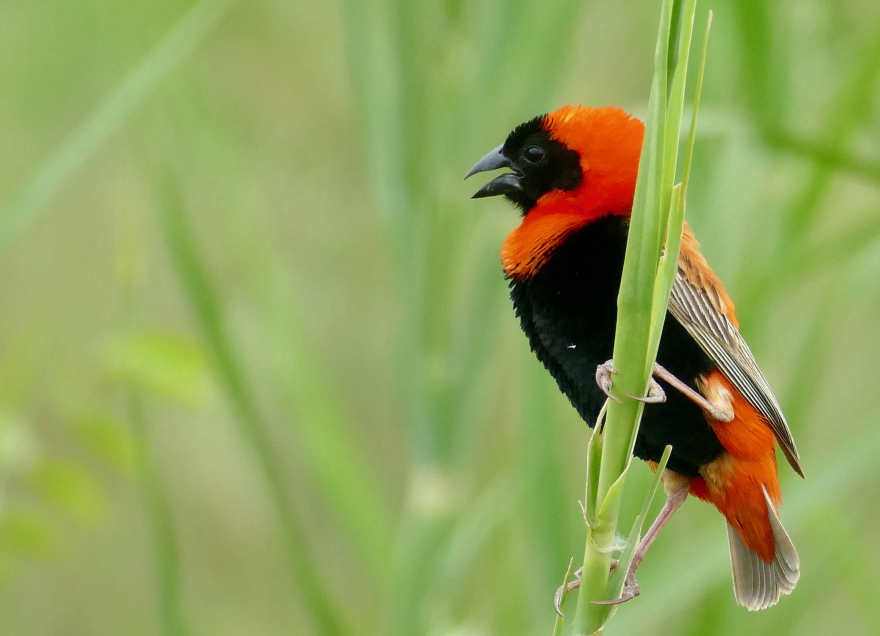
Their need for a high protein (live food) diet when rearing chicks along with some incorrect myths and so on, meant it was a struggle to find assistance. Another hurdle was the older keepers who had them wouldn’t help and in some cases were only breeding them nearly by accident anyway.
Today they are rapidly growing in popularity, live food these days is easy to acquire and people are willing to assist. It’s in their own interest to do it anyway.
Diet and general management has been covered in numerous articles books and so on so I will leave those parts for you to Google .
The questions I get these days are generally on how do I set up my aviaries and what plants do I use. I put plants into 4 main sections:
- Ones for nesting sites,
- Ones for cover and protection,
- Ones for nesting material,
- Ones for food.
There may be others, but these I will mention today .
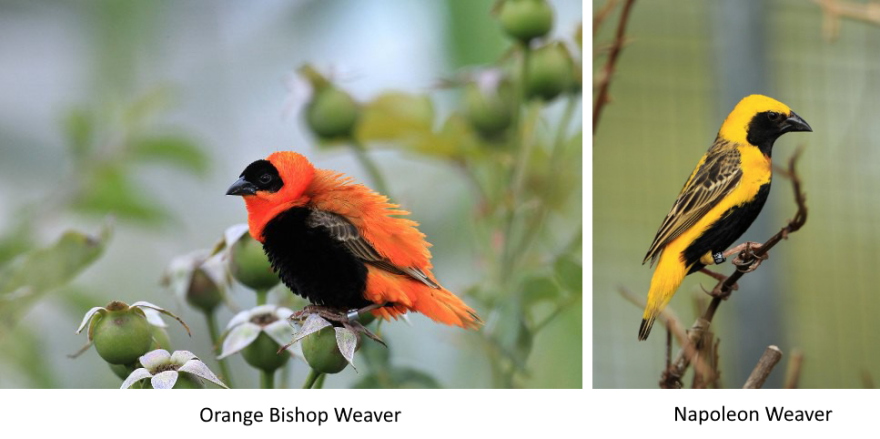
All are important for general breeding, but sites and material sections are very important to breed the three Weavers established in Australian aviculture.
The three species, Napoleon, Orange Bishop (northern race) and the Grenadier Weaver (southern race) are all classed as true Weavers as they actually tie knots of grass.
With this in mind I have over the years tried to assist the birds in their endeavours to breed. All my aviaries are open wired roof (our climate suits this style) with a reasonably large dry sheltered area.
I have tried to design the layout in a similar way as you would find their wild relatives living in Africa. Generally they are living in or near reed beds with open grassed areas all around. The reeds are the protection and nesting sites and the open grassed areas are the feeding zone. Now I am not saying you need half a football field laid out like in the wild but you can take the idea and scale it down.
My personal opinion is to use a square aviary rather than a long narrow one, say a 4mx4m rather than a 7mx3m even though the latter is bigger, because it enables the male to display better and he can chase the females into breeding condition.
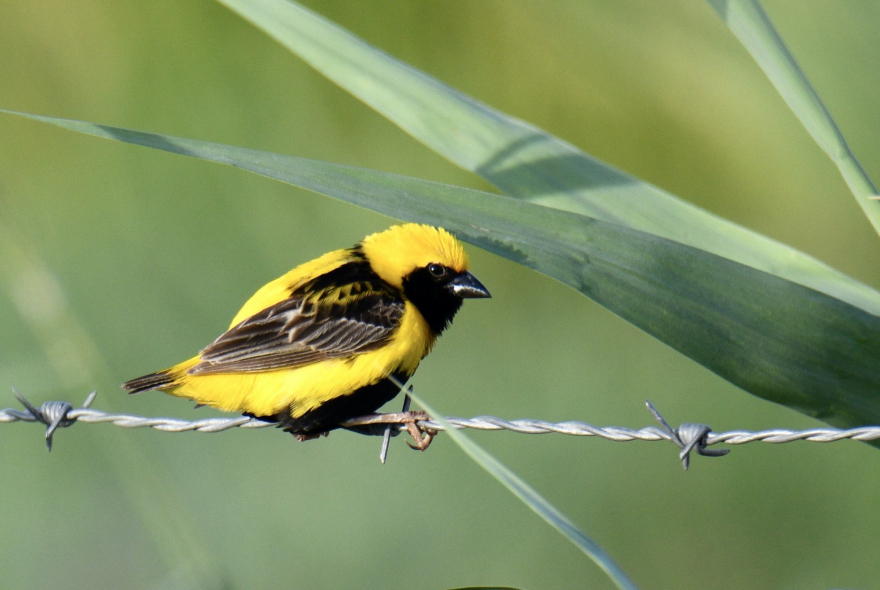
When planting, I prefer only one or two shrubs that do not go to the aviary roof. These days I use either Small Prunus, Golden Privet or my favourite, Bush and Standard Roses.
All can be pruned heavily and get a whole lot of new leaves each year. They all have vertical twigs/branches where the Weavers basically need to weave the nest circle which is actually the nest foundation. This generally covers their needs for nesting sites and protection.
The second plant group, nesting material providers. After being frustrated for years in having my Weavers nests unravelling before the chicks fledged, I discovered that the blades of grass they were using were shrinking and changing shape. The nest foundation would become loose and all was lost.
I supplied Coconut Fibre and short pieces of natural Sisal which helped, but they needed a high fibre plant to strip and use. There are several plants available but I have found that the easiest to strip and the most convenient to grow and control is the common water Reed.
I sink half a 100 lt. plastic drum in the ground, 1/3rd. fill it with dirt, then dig a clump of reeds out from the edge of a creek and place it in the drum add extra dirt until it is 2/3rds full, then fill it to the top with water. Don’t fill the drum to the top with dirt.
It generally takes a couple of years to be really thick as the Weavers tend to strip it. They will nip through the green blade to a thickness of a match stick, grab the piece and fly away with a long strand. The beauty of this is that the piece taken will only change colour over time but will not shrivel or change shape, so the nest stays tight and will stay together well after any chicks have fledged.
I have had Grenadiers weave nests in these strands of reeds but not the others. Napoleon Weavers will often build their tiny nest totally out of coconut fibre; Bishops strip the reeds but use vast amounts of short fine grasses to line their nests.
In conclusion, a square aviary with shrub or two, one or two containers of reeds and some low grasses will do fine. Heavily planted aviaries are better suited to other species. Roofed aviaries can be used if they are not too dark.
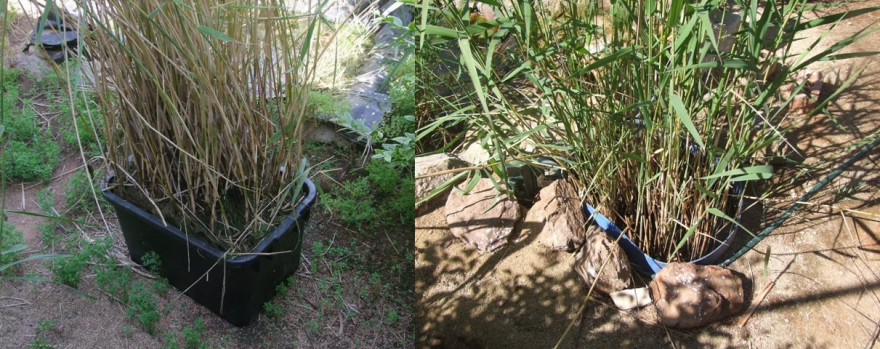
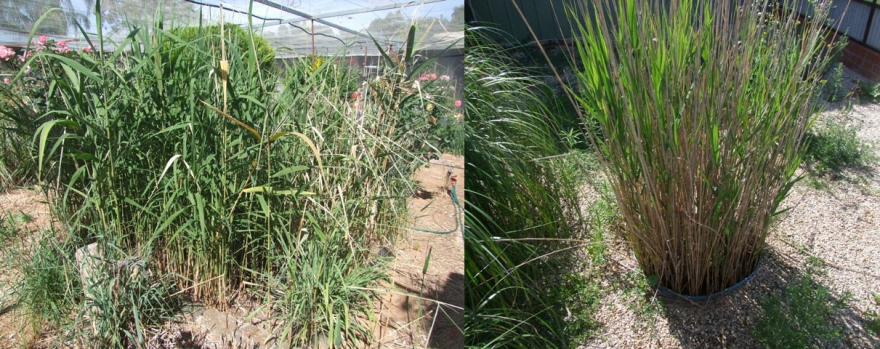
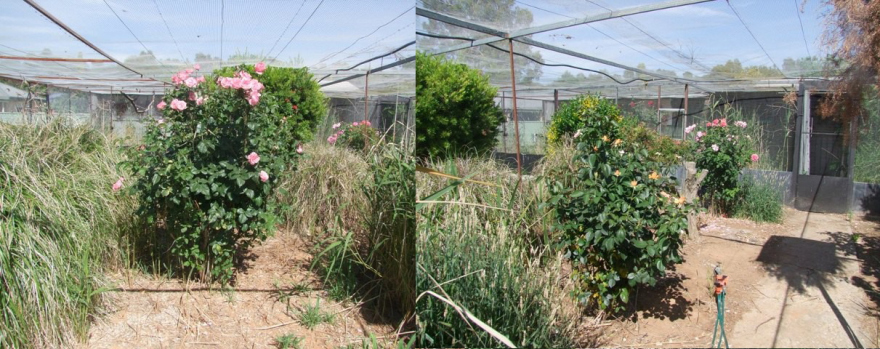
The photo on the right shows the layout of my big flight with the roses etc spread out with open areas. The little pink flowering rose bush at the end currently has a Napoleon Weaver hen incubating. The same plant was far smaller last season yet had 2 successful Bishop nests in it. It shows that big trees are not always chosen.
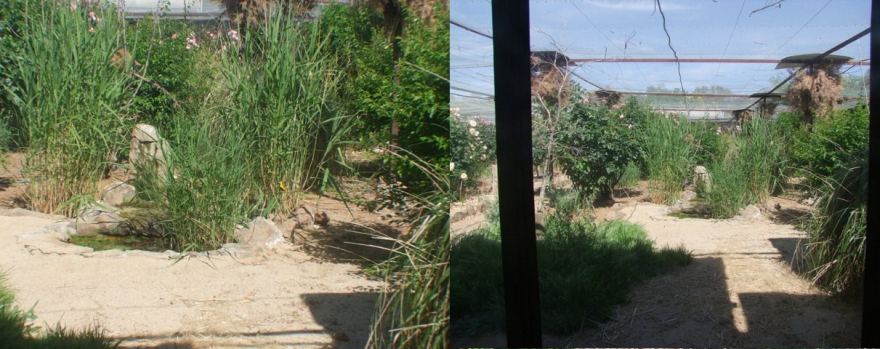
I am convinced that the successful breeders apart from doing the right things also spend a huge amount of time observing their birds. With that in mind I built an observation room and I have learnt so much in the short time it’s surprising.
It’s amazing sitting there being able to see what birds are feeding young, who are building nests and where. Without a doubt it is one of the best ideas I have had. The down side is visitors stay far longer and so do I. So with the Weaver breeding season here I can see myself sitting and watching for hours.
Where in Sydney can you buy female Grenadier weavers. I can’t find them.